| Saipan 1944:
Scenario Preview, Part One
By Mike Bennighof, Ph.D.
February 2025
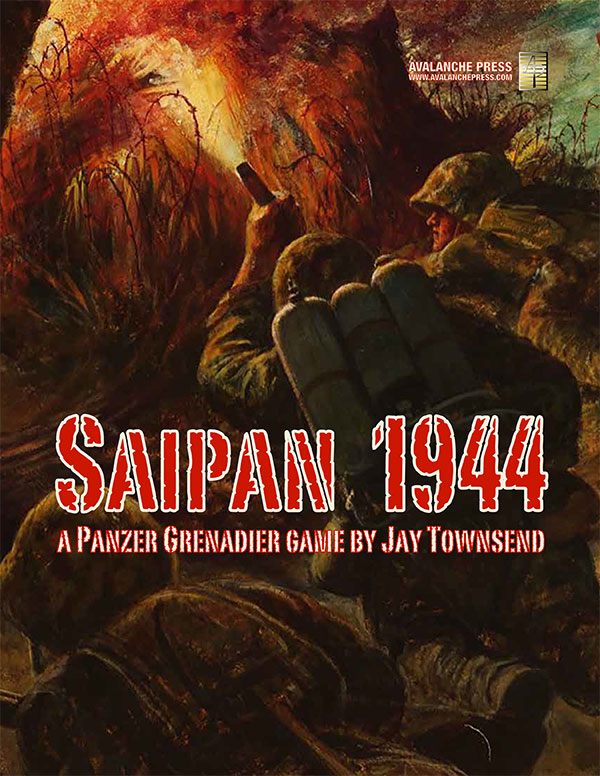 Saipan 1944 brought the Panzer Grenadier series back to the Pacific theater, one of the last games released with the Third Edition rules. It was a popular game, and now we’re returning it to your game table in a new Playbook edition, with Fourth Edition rules and the story arc format of the rest of the series. That means it’s organized into chapters, with scenarios helping to tell the story of the Saipan campaign. And each chapter has a battle game to tie them all together, allowing for longer-term competitive play over multiple sessions. Saipan 1944 brought the Panzer Grenadier series back to the Pacific theater, one of the last games released with the Third Edition rules. It was a popular game, and now we’re returning it to your game table in a new Playbook edition, with Fourth Edition rules and the story arc format of the rest of the series. That means it’s organized into chapters, with scenarios helping to tell the story of the Saipan campaign. And each chapter has a battle game to tie them all together, allowing for longer-term competitive play over multiple sessions.
Panzer Grenadier is our series of platoon-scale games of World War II tactical combat; they also cover conflicts that took place before and after the war, ranging from 1935 to 1954. It’s an interactive game system, giving both players the chance to act, emphasizing leadership, morale and the interactions of infantry, tanks, and artillery. It was designed from the ground up to give equal measure to tanks and foot soldiers.
That’s evident in Saipan 1944. It’s an infantry battle, featuring the high-morale U.S. Marines, backed by a huge array of support weapons (tanks, flame-throwing tanks, rocket launchers) against the high-morale Japanese (both Army and Navy), backed by . . . well, not a whole lot.
And it all starts on the beaches. Let’s have a look at Chapter One.
Chapter One
Beaches of Saipan
By June 1944, the United States Navy and Marine Corps had gained enormous experience in landing troops on a hostile, defended shore. Saipan would be invaded by two Marine divisions, each landing two regiments on the south-west corner of the island. While that went on, most of the remaining Marines would demonstrate off the island’s north-west coast; the transports lowered their landing craft but no Marines boarded. Battleships and cruisers would plaster both the actual and feint areas with heavy shells, followed by airstrikes.
LVT amphibious tractors would carry the assault troops, followed by DUKW amphibious trucks and LCM heavy landing craft bearing tanks and artillery. It was a well-oiled machine, meeting a determined if out-gunned Japanese garrison on the beaches. The feint had not fooled them: the Japanese had carefully measured the fall of the preliminary bombardment, and noted that the south-west beaches received far more shells and bombs.

The beaches of Saipan. Open in new tab to embiggen the image.
Scenario One
Red Beach
15 June 1944
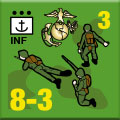 The opening invasion of Saipan targeted the southwestern coast of the island. The beaches here had minimal coral reefs offshore and a gentle’ sandy slope leading up out of the water. The 2nd Marine Regiment would form the left, northern flank of the landings, and place one battalion each on Red Beach 1 and Red Beach 2, each 600 yards wide. The second wave would come ashore on the third site, Red Beach 3. The opening invasion of Saipan targeted the southwestern coast of the island. The beaches here had minimal coral reefs offshore and a gentle’ sandy slope leading up out of the water. The 2nd Marine Regiment would form the left, northern flank of the landings, and place one battalion each on Red Beach 1 and Red Beach 2, each 600 yards wide. The second wave would come ashore on the third site, Red Beach 3.
Conclusion
A previously-undetected current moved the Marines north of their intended landing beaches, where the Japanese defenses had suffered less damage from the pre-invasion bombardment. “I fear,” Time magazine’s Robert Sherrod wrote in his notebook, “all this smoke and noise does not mean many (Japanese) killed.” Heavy Japanese fire and dense terrain stopped the Marine advance about 100 yards from the water’s edge, leaving the beach littered with the burning wreckage of their LVT tractors. The Marines slowly pressed into the jungle on foot.
Notes
We’ve done some beach landing scenarios in Panzer Grenadier before, but never on this scale. Two beach maps are in play, with a regimental-sized Marine landing force including amphibious light tanks. The Japanese defenders are dug in with casemates and ample support weapons and off-board artillery. Both sides have sky-high morale. This is going to be one of the best-loved scenarios in the entire series.
Scenario Two
Green Beach
15 June 1944
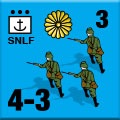 Pre-invasion assessments highlighted Afetna Point as a Japanese defense bastion. The 8th Marines, landing one battalion apiece on beaches Green 1 and Green 2, would have the northern half of the point in their sector. Naval bombardment saturated Afetnae Point, but the current drove the LVT’s northward, and both battalions landed on Green 1, facing defenses that had suffered less from bombs and shellfire than had the point. Pre-invasion assessments highlighted Afetna Point as a Japanese defense bastion. The 8th Marines, landing one battalion apiece on beaches Green 1 and Green 2, would have the northern half of the point in their sector. Naval bombardment saturated Afetnae Point, but the current drove the LVT’s northward, and both battalions landed on Green 1, facing defenses that had suffered less from bombs and shellfire than had the point.
Conclusion
The 8th Marines, veterans of Guadalcanal and Tarawa, sorted out their battalions under fire. The 2nd Battalion pushed southeastward into the well-defended marshland, while the 3rd Battalion drove directly inland off the beaches. Company G of the 2nd Battalion set out directly southward, to seize their objective of Afetna Point.
Notes
This is a very similar scenario, with a huge wave of Marines coming ashore in their amphibious personnel carriers and trying to drive quickly inland. Marines hitting the beach is one of the iconic images of World War II, and this scenario captures the feel very well.
Scenario Three
Riding Shotgun
15 June 1944
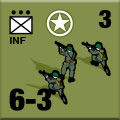 The 2/8th Battalion’s Company G, charged with taking Afetna Point, had been given all of the regiment’s shotguns (while retaining their M1 Garands). This would hopefully help avoid friendly fire casualties since 4th Marine Division troops would be advancing from the opposite direction. The M97 pump shotgun could be slam-fired, allowing a Marine to keep the trigger pulled and fire all six rounds as quickly as the he could chamber a fresh round. That yielded enormous close-range firepower, that would not travel more than 50 yards. The 2/8th Battalion’s Company G, charged with taking Afetna Point, had been given all of the regiment’s shotguns (while retaining their M1 Garands). This would hopefully help avoid friendly fire casualties since 4th Marine Division troops would be advancing from the opposite direction. The M97 pump shotgun could be slam-fired, allowing a Marine to keep the trigger pulled and fire all six rounds as quickly as the he could chamber a fresh round. That yielded enormous close-range firepower, that would not travel more than 50 yards.
Conclusion
The Marines fought their way slowly forward, repelling numerous Japanese counter-attacks. The shotguns proved extremely useful in short-range combat, despite many of their shells having warped in the salt sea air so that they no longer could be loaded. The Marines failed to take their objective, and there would be another day’s fighting before the Japanese were cleared from Afetna Point.
Notes
I designed this scenario as a promo for a long-gone gaming magazine, the placement a favor from its editor, my friend Amabel Holland. It’s just a small scenario, with shotgun-wielding Marines, something you don’t see every day.
Scenario Four
Stumbling Armor
15 June 1944
 Lt. Gen. Hideyoshi Obata, commanding the Japanese troops defending the Marianas, planned to hold the invaders at or near the beaches with two strong defensive lines. Any penetration would be met by his reserves: a regiment of tanks, weakened by losses to submarines during its voyage to Saipan, and four rifle companies. A weak Japanese tank-infantry counterattack opened at noon. Lt. Gen. Hideyoshi Obata, commanding the Japanese troops defending the Marianas, planned to hold the invaders at or near the beaches with two strong defensive lines. Any penetration would be met by his reserves: a regiment of tanks, weakened by losses to submarines during its voyage to Saipan, and four rifle companies. A weak Japanese tank-infantry counterattack opened at noon.
Conclusion
The Japanese tankers may have stumbled mistakenly into the Marine positions: Marines reported that one tank stopped amid the heavy smoke and popped its turret hatch so the commander could look around, apparently in confusion. The Marines gave him a bazooka rocket for his troubles, and dispatched all five enemy tanks that rumbled into their positions including one that rolled to within 75 yards of Col. James Riseley’s 6th Marine Regiment command post before it, too, succumbed to a Marine rocket.
Notes
The Japanese strike back – with tanks. Okay, there aren’t many tanks and they aren’t very good. The Marine cannon-armed LVT’s are easily a match for them. But it’s a fun, small, and short scenario with the high-morale Japanese on the attack.
Scenario Five
Advance from Blue Beach
15 June 1944
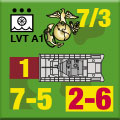 Lt. Col. John J. Cosgrove’s 1st Battalion of the 23rd Marines came ashore on the correct site, Blue Beach 1, but heavy Japanese fire kept the amphibious tractors from moving inland with his Marines as planned. With few of the tractors, intended to act as light tanks once ashore, the Marines worked their way forward while the Japanese called down very accurate fire from a nearby mountain artillery battalion. Lt. Col. John J. Cosgrove’s 1st Battalion of the 23rd Marines came ashore on the correct site, Blue Beach 1, but heavy Japanese fire kept the amphibious tractors from moving inland with his Marines as planned. With few of the tractors, intended to act as light tanks once ashore, the Marines worked their way forward while the Japanese called down very accurate fire from a nearby mountain artillery battalion.
Conclusion
The armored tractors that should have supported Cosgrove’s assault on the hill known as Fina Susu refused to advance up the slope, despite the infantry commander’s angry diatribe. The weapons on the LVT’s would only fire in a flat trajectory, their commanders argued, leaving them dangerously exposed. The Marine riflemen went forward on foot, making slow progress until the Japanese abandoned the hill during the night.
Notes
The Marines push inland in this small scenario, to be met by a small Japanese force dug in defending tough terrain. The Marines have an edge in morale and leadership, but their artillery has not yet arrived ashore so they’re actually out-gunned by the Japanese.
Scenario Six
Punishment on Yellow Beach
15 June 1944
 Lt. Col. Lewis C. Hudson’s 2/25 Marines landed on Beach Yellow 1, the next-to-last American beach. Here the Marines faced enemy fire from the front, where Japanese guns had been dug in behind a railroad embankment, and from their right flank, where Japanese guns on Agingan Point, the south-west tip of Saipan, poured fire into the slowly-moving amphibious tractors. The Japanese infantry gave way, allowing the artillery, anti-aircraft guns and mortars to wreak slaughter on the invaders. The embankment would have to be taken. Lt. Col. Lewis C. Hudson’s 2/25 Marines landed on Beach Yellow 1, the next-to-last American beach. Here the Marines faced enemy fire from the front, where Japanese guns had been dug in behind a railroad embankment, and from their right flank, where Japanese guns on Agingan Point, the south-west tip of Saipan, poured fire into the slowly-moving amphibious tractors. The Japanese infantry gave way, allowing the artillery, anti-aircraft guns and mortars to wreak slaughter on the invaders. The embankment would have to be taken.
Conclusion
Where the Marine-crewed LVT(A)’s on other beaches refused to engage the enemy, the Army crews of the 708th Amphibian Tank Battalion spearheaded the assault and even deliberately sought to draw enemy fire away from the Marines. Despite the bravery of the Army amphibians, the Japanese held out until Navy carrier planes blasted their positions and destroyed many of their heavy weapons.
Notes
It’s just one map, but it’s one filled with action. The Marines are trying to press inland, but the Japanese are well-supplied with heavy weapons that can shred their lightly-armored amphibian APC’s if the American player is even slightly reckless.
Click here to order Saipan 1944 right now.
Please allow an extra four weeks for delivery.
Pacific Islands Package
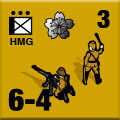 Saipan 1944 (Playbook edition) Saipan 1944 (Playbook edition)
Marianas 1944
Leyte 1944
Retail Price: $156.97
Package Price: $125
Gold Club Price: $100
You can order the Pacific Package right here.
Please allow an extra four weeks for delivery.
Sign up for our newsletter right here. Your info will never be sold or transferred; we'll just use it to update you on new games and new offers.
Mike Bennighof is president of Avalanche Press and holds a doctorate in history from Emory University. A Fulbright Scholar and NASA Journalist in Space finalist, he has published a great many books, games and articles on historical subjects; people are saying that some of them are actually good.
He lives in Birmingham, Alabama with his wife and three children. He misses his lizard-hunting Iron Dog, Leopold.
Daily Content includes no AI-generated content or third-party ads. We work hard to keep it that way, and that’s a lot of work. You can help us keep things that way with your gift through this link right here.
|
